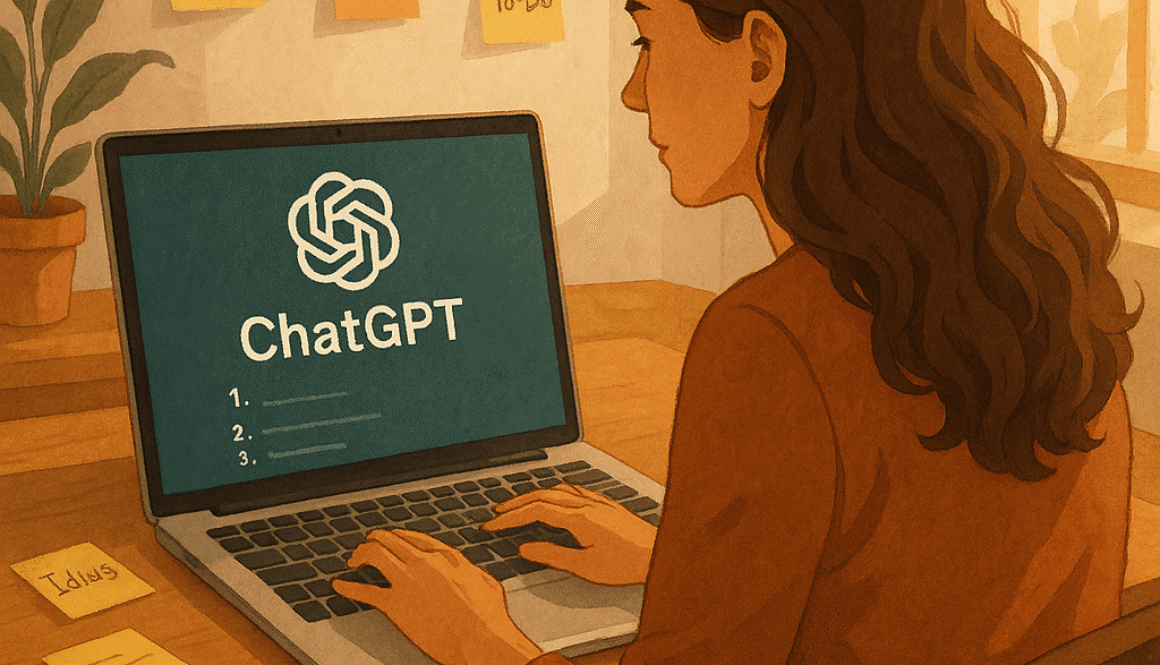Prompt Engineering Isn’t Just for Coders: A Real-World Guide for Creators, Coaches & Solopreneurs
Let’s Get Real: AI Feels Intimidating
Let me guess — you’ve heard the term “prompt engineering” tossed around in AI circles and thought, “Sounds complicated… probably something only developers get.” I get it. The name doesn’t exactly scream “user-friendly,” does it?
But here’s the thing no one tells you:
Prompt engineering is just a fancy phrase for asking AI the right questions. That’s it.
And if you’re a content creator, coach, solopreneur, or online entrepreneur wearing all the hats — this is one skill that can genuinely save you hours of time (and brainpower). You don’t need to code. You don’t need a technical degree. You just need to learn how to talk to AI in a way that gets you what you actually need.
This guide isn’t about theory. It’s about real-world applications — the kind you can start using today to make your business run smoother, smarter, and way more efficiently.
So grab a coffee, and let’s dive in.
First, What Is Prompt Engineering?
In plain English?
It’s how you communicate with AI tools like ChatGPT, Claude, or Gemini. It’s giving clear, well-structured instructions so they understand the task and give you responses that actually help instead of generic fluff.
Think of it like this:
If AI is a super-smart assistant, the prompt is the instruction manual. A good prompt tells it:
- What you want
- Why you want it
- Who it’s for
- How it should sound
Bad prompts? They’re like sending your assistant into a meeting with no agenda and hoping for the best.
Why You Should Care (Even If You Hate Tech)
Here’s the truth: prompt engineering isn’t a tech thing — it’s a communication skill.
If you’ve ever:
- Written an email to a client
- Explained your offer to someone new
- Outsourced a task to a VA
- Created a piece of content…
…then you already understand the basics of prompt engineering. You’re just applying it to humans instead of AI.
Now imagine being able to do that with a tool that works 24/7, never sleeps, and never needs coffee breaks.
1. Let AI Handle the “What Should I Post?” Panic
We’ve all been there — staring at your screen like it holds the meaning of life, waiting for a blog idea or Instagram caption to magically appear.
Writer’s block? It’s real. But here’s the fix:
AI doesn’t get blocked. It just needs the right nudge.
Try This Prompt:
“Act like a content strategist for a [insert niche] blog. I create weekly content for [target audience]. Based on current trends, give me 10 high-traffic, beginner-friendly blog post ideas that would be valuable and easy to rank for.”
You can tailor this to video ideas, newsletters, carousels — whatever format you’re stuck on.
Real Use Case:
A friend of mine runs a wellness blog and was completely burned out. We tweaked her prompt to:
“Give me 10 blog post ideas for beginner-friendly gut health content, with seasonal relevance and SEO potential.”
Within seconds? She had a full calendar.

2. Automate the “Admin Soup” That Drains Your Day
Let’s talk about the part of business no one romanticizes: admin.
Emails. Reminders. Invoices. Calendars.
The small tasks that sneakily eat up your entire morning.
What if you could delegate most of that to AI or automations — without needing to hire a team?
🛠 Tools That Help:
- Zapier (connects apps without coding)
- Make.com (visual workflows)
- ChatGPT + Google Sheets (build your own systems)
Example:
Say you’re onboarding a new client. Normally you’d:
- Send a welcome email
- Schedule a call
- Add them to your CRM
- Create an invoice
Instead?
You could set up a workflow that does all of this automatically — or create one master prompt in ChatGPT that drafts all those things in your tone.
“Write a friendly welcome email for a new coaching client. Tone: warm and confident, with clear next steps.”
Boom. Done in 20 seconds.
3. Improve Customer Conversations Without Doing It All Live
If you’re in the service game — coaching, consulting, teaching — chances are, you’re answering the same handful of questions again and again.
“How much do you charge?”
“What’s the process?”
“Do you work 1:1 or in groups?”
“Do you offer refunds?”
It’s exhausting.
Now imagine an AI chatbot that sounds like you, answers in your tone, and handles those initial queries without you lifting a finger.
Tools to Try:
- Tidio – AI support + marketing
- ManyChat – great for IG/Facebook DMs
- Chatbase – lets you train a bot on your site content
Just feed it your FAQ, bio, and a few blog posts — then prompt:
“Answer this in the tone of a helpful, empathetic coach who respects boundaries. Keep it concise but personal.”
You’ll still step in for the real convos, but now you’re not doing the same loop over and over.
4. Personalize Like a Human — But at Scale
Here’s something we don’t say enough: generic content isn’t bad because it’s boring. It’s bad because it doesn’t feel like it’s for me.
With AI, you can take the same core message and shape it for:
- A first-time visitor
- A warm lead
- A long-time client
- Someone on your email list
All using one prompt:
“Write this email with 3 variations — one for a cold audience, one for warm leads, and one for my current clients. Tone: friendly and real, with a clear call to action to book a call.”
⚠️ Mistake to Avoid:
Don’t let AI write for you without guidance. You still need to tell it what you care about, who your people are, and what you stand for.
AI isn’t replacing your voice. It’s amplifying it.
5. Teach AI to Write Exactly Like You
Okay, this is where it gets spooky (in a good way).
Yes — you can train ChatGPT or Claude to write like you. No, it doesn’t involve coding.
You just give it samples.
“Here are 3 of my emails/blog posts. Analyze my writing style and describe it in 5 points. Then rewrite this content in my style.”
Boom. It picks up on your:
- Sentence length
- Favorite phrases
- Tone
- Use of emojis or punctuation quirks
- Even your level of formality
You can even create a custom “persona prompt” that starts every session with your voice baked in.
Prompt Recipe Pack (Your New Best Friend)
Here’s a sneak peek of what a “Prompt Recipe” looks like in action:
| 📌 Task | 🧠 Prompt |
|---|---|
| Blog Ideas | “Give me 10 beginner-friendly blog ideas for my productivity blog aimed at busy solopreneurs.” |
| Email Copy | “Write a warm welcome email for a freebie subscriber. Keep it casual but helpful. Include one simple call to action.” |
| Instagram Caption | “Write a relatable caption for a reel about working from home as a creator. Include 3 emojis and 4 hashtags.” |
| Product Launch Outline | “Help me structure a launch email sequence for a $49 mini-course. Audience: new creators.” |
You can build a prompt bank in Notion or Google Docs and pull from it weekly.
Let’s Talk About What Doesn’t Work
You know what doesn’t work?
“Write a blog post for me.”
That’s like walking into a coffee shop and saying, “Make me something.”
Instead, be specific. Try this instead:
“Write a 1,000-word blog post for beginner bloggers about using AI to create their first content calendar. Make it sound friendly and conversational, with clear steps and examples.”
Think of AI like a smart junior writer. It needs your direction to shine.
Final Word: This Is the Future of Communication
You don’t need to be tech-savvy.
You don’t need to understand AI architecture or NLP.
You just need to:
- Communicate clearly
- Know your voice
- Keep refining
Prompt engineering is the next soft skill. Just like Canva made everyone a designer, prompt engineering is making everyone an efficient creator.
And the better you get at it?
The less you’ll waste time on things you hate.
The more you’ll spend energy on the stuff that matters.
The faster your business will grow — with way less stress.
